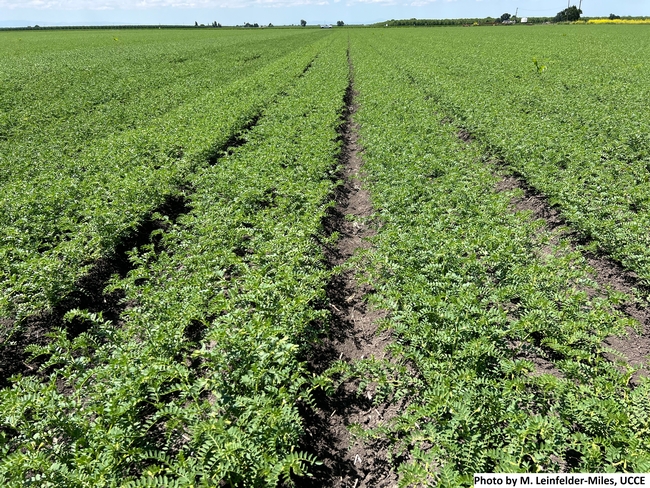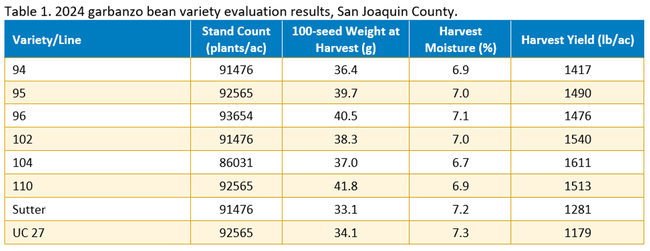
This was a non-replicated evaluation; therefore, no statistical analysis is presented (Table 1). Stand counts were made approximately two weeks after planting on April 9th. The stand was assessed as the number of plants per two-foot length. Twelve replicate counts were averaged. In early May, we observed that Sutter and advanced lines 102, 104, and 110 had slightly earlier flowering than UC 27 and advanced lines 94, 95, and 96. We are interested in knowing whether the advanced lines have tolerance to Fusarium wilt and Ascochyta blight, but no diseases were observed at this location.
We harvested on July 25th. The plots in their entirety were combined and weighed. At harvest, the grower observed that lines 104 and 110 had an upright growth habit that made them easier to harvest. We measured harvest moisture on three subsamples, which were averaged for the summary table below, and we evaluated 100-seed weight as a measure of seed size, averaging five subsamples. In previous evaluations of these advanced lines at UC Davis, they have had higher yield and seed size than the industry standard varieties, and that held true at the San Joaquin County site this year.
We would like to thank the cooperating grower and bean warehouse; the CA Crop Improvement Association for funding regional trials; and the CA Dry Bean Advisory Board for assistance with statewide research prioritization and assistance with outreach.
Attached Images:
